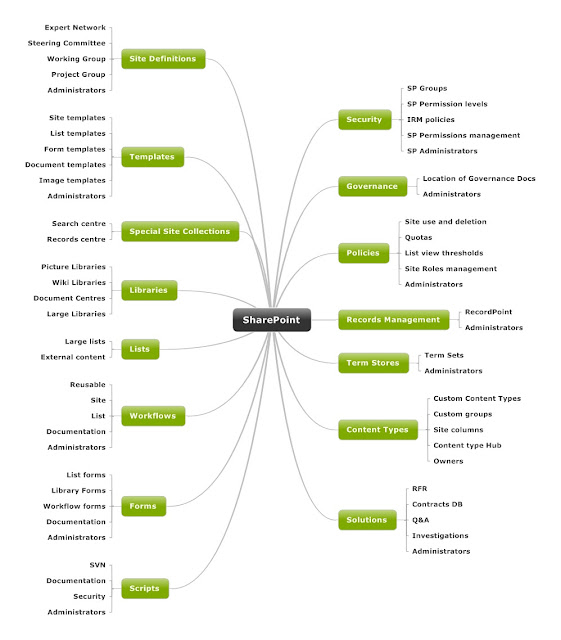SQL QUERY: COUNT THE NUMBER OF UNIQUE MEMBERS OF SHAREPOINT GROUPS:
The query checks if the SharePoint specific tables exist in the DB scheme otherwise the DB will be skipped.
No rows returned can also mean that you don’t have more than (in this case) 800 users per group defined – the query as it is only outputs problematic groups with more than 800 members:
DBAs can execute the query a second time and change the value 800 to e.g. 10 to see an output.
CREATE TABLE ##UsersPerGroup
(
[Counts] bigint NULL,
[GroupTitle] nvarchar(255) NULL,
[siteID] uniqueidentifier null,
[servername] nvarchar(100) null,
[content_DB] nvarchar(100) null
)
go
CREATE TABLE #DBNamesLL
(
DatabaseName VARCHAR(800),
RecStatus INT Default 0
)
DECLARE @cmdStr NVARCHAR(2000)
DECLARE @dbName VARCHAR(500)
INSERT INTO #DBNamesLL (DatabaseName)
SELECT [Name] FROM sys.databases where state_desc = 'online' ORDER by [Name] ASC
WHILE EXISTS
(SELECT * FROM #DBNamesLL WHERE RecStatus=0)
BEGIN
SELECT TOP 1 @DbName=DatabaseName
FROM #DBNamesLL
WHERE RecStatus=0
SELECT @cmdStr = N'USE ' + quotename(@dbName, '[') + N';'
SELECT @cmdStr = @cmdStr + CHAR(13)+CHAR(10) + 'IF EXISTS(SELECT TABLE_NAME FROM INFORMATION_SCHEMA.TABLES with (NOLOCK) WHERE TABLE_NAME = ''namevaluepair'')'
SELECT @cmdStr = @cmdStr + CHAR(13)+CHAR(10) + 'BEGIN'
SELECT @cmdStr = @cmdStr + CHAR(13)+CHAR(10) + 'INSERT INTO ##UsersPerGroup'
SELECT @cmdStr = @cmdStr + CHAR(13)+CHAR(10) + 'SELECT COUNT(m.MemberId) as [Counts], g.Title as [GroupTitle], g.SiteId,'
SELECT @cmdStr = @cmdStr + CHAR(13)+CHAR(10) + '(@@servername) [servername], (select db_name(dbid) from master..sysprocesses with (NOLOCK) where spid=@@SPID) [Content_DB]'
SELECT @cmdStr = @cmdStr + CHAR(13)+CHAR(10) + 'from GroupMembership m with(nolock)'
SELECT @cmdStr = @cmdStr + CHAR(13)+CHAR(10) + 'join Groups g with(nolock) on m.GroupId = g.ID and m.SiteId = g.SiteId'
SELECT @cmdStr = @cmdStr + CHAR(13)+CHAR(10) + 'group by g.Title, g.SiteId'
SELECT @cmdStr = @cmdStr + CHAR(13)+CHAR(10) + 'HAVING COUNT(m.MemberId) > ''800'''
SELECT @cmdStr = @cmdStr + CHAR(13)+CHAR(10) + 'END'
EXEC sp_executesql @Cmdstr
UPDATE #DBNamesLL
SET RecStatus=1
WHERE RecStatus=0
AND DatabaseName=@DbName
END
select Counts AS 'Count', GroupTitle, servername AS ServerName, content_DB AS ContentDB, siteID AS SiteID from ##UsersPerGroup order by counts desc
DROP TABLE #DBNamesLL
Drop table ##UsersPerGroup
Subscribe to:
Post Comments (Atom)
SharePoint Information Architecture Diagram
Here is the template I use for Information Architecture designs. It's built using Mindjet and I flesh the nodes out with the low level d...

-
Introduction This document is intended to highlight possible causes of poor indexing performance on SharePoint 2007 farms as well as p...
-
OPEN FIREWALL PORTS 56737 AND 56738 Submitted Request to Open firewall ports 56737 and 56738 in Approval Environment to enable Office Ser...
-
Using stsadm to stop the osearch service will blat all the indexes: In command prompt try running: taskkill.exe /F /IM mssearch.exe /T ...


No comments:
Post a Comment